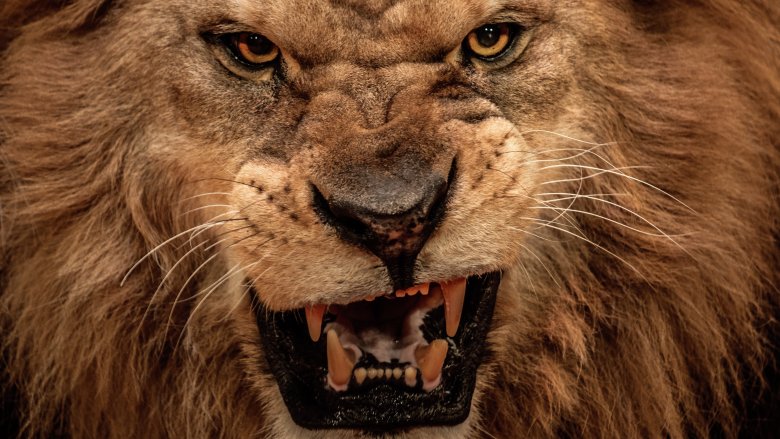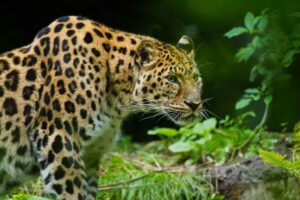
Introduction
Lions are often referred to as the “kings of the jungle,” symbolizing their status as apex predators in the animal kingdom. However, despite their formidable reputation, lions are not invulnerable and do face threats from other animals. Understanding what animals eat lions provides insight into the complex dynamics of ecosystems and the interactions between different species. This article will explore the various predators of lions, the circumstances under which these interactions occur, and the ecological significance of these relationships.
The Lion’s Ecological Role
Lions play a crucial role in their ecosystems as apex predators. They help maintain the balance of populations of herbivores, which in turn affects the vegetation and overall health of their habitats. By preying on large herbivores such as zebras, wildebeests, and buffalo, lions contribute to the regulation of these populations, preventing overgrazing and promoting biodiversity.
Characteristics of Lions
- Scientific Classification: Lions belong to the family Felidae and the genus Panthera. Their scientific name is Panthera leo.
- Physical Traits: Adult male lions are distinguished by their manes, which can vary in color and size. They typically weigh between 330 to 550 pounds (150 to 250 kg) and can reach lengths of up to 10 feet (3 meters) including the tail. Female lions are slightly smaller and lack manes.
- Habitat: Lions primarily inhabit grasslands, savannas, and open woodlands in Africa, with a small population of Asiatic lions found in India’s Gir Forest.
- Social Structure: Lions are unique among big cats for their social behavior, living in groups called prides. A pride typically consists of related females, their cubs, and a few adult males.
Natural Predators of Lions
While adult lions have few natural predators, they can be vulnerable to certain threats, particularly when they are young, sick, or injured. The following sections detail the animals that may prey on lions or pose a significant threat to them.
1. Hyenas
Hyenas are often considered one of the primary threats to lions. Although they do not typically hunt adult lions, they can attack lion cubs or sick and injured lions.
- Behavior: Hyenas are social animals that live in clans, which can number up to 80 individuals. Their strength lies in their numbers, and they can overpower a lone lion if they work together.
- Competition: Hyenas compete with lions for food, often scavenging from lion kills. Their powerful jaws allow them to consume almost every part of a carcass, including bones.
2. Crocodiles
Crocodiles pose a significant threat to lions, particularly when they approach water bodies to drink or cross.
- Ambush Predators: Crocodiles are stealthy hunters that can attack with little warning. If a lion is caught off guard near the water, a crocodile can drag it underwater and drown it.
- Caution Around Water: Lions are generally cautious when near water bodies known to harbor crocodiles, but lapses in vigilance can lead to deadly encounters.
3. Other Lions
Intra-species competition can also lead to dangerous encounters. Male lions, particularly, may kill cubs that are not their own to ensure that their genes are passed on.
- Infanticide: When a new male takes over a pride, he may kill the existing cubs to bring the females back into estrus more quickly.
- Territorial Battles: Male lions often engage in fierce battles for territory and dominance, which can lead to injury or death.
4. Large Herbivores
While not typical predators, large herbivores can pose threats to lions under certain circumstances.
- Defensive Behavior: Species such as buffalo and elephants can be dangerous if they feel threatened. A cornered buffalo, for example, can injure or kill a lion with its powerful horns.
- Group Defense: Some herbivores, like wildebeests, may band together to fend off predators, potentially injuring a lion in the process.
5. Humans
Humans are perhaps the most significant threat to lions. Hunting, habitat loss, and conflict with livestock farmers have led to declining lion populations.
- Hunting and Poaching: Trophy hunting and illegal poaching have severely impacted lion numbers in some areas.
- Habitat Encroachment: As human populations expand, lion habitats are increasingly encroached upon, leading to conflicts with livestock and resulting in retaliatory killings.
Table of Animals That Eat Lions
| Predator Type | Specific Predators | Description |
|---|---|---|
| Hyenas | Spotted Hyena | Often scavenges from lion kills; can attack cubs or weak adults. |
| Crocodiles | Nile Crocodile | Ambush predator that can drown lions near water bodies. |
| Lions | Male Lions | Engage in infanticide and territorial battles; may kill rival males. |
| Large Herbivores | Buffalo, Elephants | Can injure lions when threatened; defend themselves in groups. |
| Humans | Poachers, Farmers | Hunt lions for sport and retaliate against livestock predation. |
The Impact of Predation on Lion Populations
While lions are apex predators, their populations can be influenced by the presence of other predators and environmental factors. Understanding these dynamics is crucial for conservation efforts.
1. Competition for Resources
The presence of other predators, such as hyenas and leopards, can lead to increased competition for food resources. This competition can force lions to hunt more frequently and target different prey species.
2. Stress and Health
Increased competition and threats from other predators can lead to stress in lion populations. Stress can negatively impact reproductive success and overall health, making lions more susceptible to disease.
3. Conservation Challenges
Conservation efforts must consider the complex interactions between lions and other species. Protecting lion habitats is essential not only for their survival but also for maintaining the balance of the entire ecosystem.
Conclusion
Lions, as apex predators, face few natural threats in the wild. However, they are not without their adversaries. Hyenas, crocodiles, rival lions, and even humans can pose significant risks to lion populations. Understanding these dynamics is essential for effective conservation strategies aimed at protecting these majestic animals and their habitats.By recognizing the challenges lions face from other predators and human activities, we can work towards ensuring their survival in the wild. Conservation efforts must focus on habitat protection, reducing human-wildlife conflict, and fostering coexistence between lions and local communities.
Frequently Asked Questions
- What animals eat lions?
Lions have few natural predators, but hyenas, crocodiles, and rival lions can pose threats, particularly to cubs and injured individuals. - Do hyenas actively hunt lions?
Hyenas do not typically hunt adult lions but may attack cubs or sick individuals if the opportunity arises. - Can crocodiles kill lions?
Yes, crocodiles can kill lions if they are caught off guard near water bodies, using their ambush tactics to drown them. - Are lions ever preyed upon by other large herbivores?
While not common, large herbivores like buffalo and elephants can injure lions if they feel threatened. - What is the biggest threat to lion populations?
The biggest threats to lion populations are habitat loss, human-wildlife conflict, and poaching.
References
“Lion.” Wikipedia. https://en.wikipedia.org/wiki/Lion


